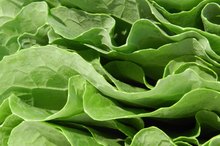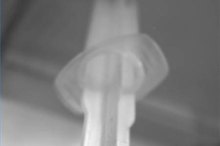Gallbladder Removal Effects on Cholesterol
The gallbladder, a small sac located in the abdomen near the liver, serves one function–to hold bile until the intestines need it for digestion. The most common disorder of the gallbladder, the formation of gallstones, can lead to gallbladder removal. Cholesterol contributes to the need for gallbladder removal, but the removal of your gallbladder does not significantly affect your cholesterol level. However, if doctors also remove the ring of muscle that controls the flow of bile, a procedure known as biliary sphincterotomy, your cholesterol levels may decrease.
If you are experiencing serious medical symptoms, seek emergency treatment immediately.
Gallstones
Bile, a substance produced in the liver, consists of bile acids produced using cholesterol, phospholipids, electrolytes and water. Once produced, bile flows from the liver to the gallbladder. The gallbladder concentrates the bile by removing the water and electrolytes and when the small intestine signals the presence of dietary fat, it secretes the bile. Since cholesterol is not soluble in water, when the bile contains too much cholesterol, it can fall out of solution and accumulate into tiny stones. Approximately 75 percent of all gallstones consist of cholesterol, according to the University of Maryland Medical Center 2.
- Bile, a substance produced in the liver, consists of bile acids produced using cholesterol, phospholipids, electrolytes and water.
Treatment Options
Pear Juice & Gallbladder Stones
Learn More
Doctors can try to dissolve gallstones using medications like chenodeoxycholic acid or ursodeoxycholic acid, but this method can take up to six months to dissolve 80 percent of the stones and stones usually reform after stopping the medication, according to the University of Pennsylvania Division of Gastrointestinal Surgery 4. External shock waves, a method known as lithotripsy, can also help break up the stones. Removing the gallbladder in a procedure known as cholecystectomy remains the treatment of choice in most cases.
Following Surgery
Removing the gallbladder does not affect the production of bile. The liver continues to use cholesterol to produce bile but because the gallbladder cannot store it, the bile continuously flows from the liver to the small intestine through the common bile duct. **Your body reabsorbs 90 percent of all bile salts, which contain the cholesterol, through the lining of the intestine and sends it back to the liver through the portal vein, according to research published in the February 2007 issue of “The Canadian Journal of Gastroenterology.” Bile salts go through this cycle about 20 times before being excreted in the feces 1. Because bile flows continuously, it would make sense that it goes through this cycle faster than when the gallbladder controlled the flow. More bile getting excreted means an increase in bile acid production which uses more cholesterol, but the research in “The Canadian Journal of Gastroenterology” states that removing the gallbladder does not increase the production of bile salts and so does not affect cholesterol levels.
- Removing the gallbladder does not affect the production of bile.
- More bile getting excreted means an increase in bile acid production which uses more cholesterol, but the research in “The Canadian Journal of Gastroenterology” states that removing the gallbladder does not increase the production of bile salts and so does not affect cholesterol levels.
Biliary Sphincterotomy
Does Magnesium Help Dissolve Gallstones?
Learn More
If a gallstone gets into the bile duct your doctor may need to perform a biliary sphincterotomy, which removes the sphincter, or ring of muscle, in the duct. Removing this sphincter increases the rate of bile flow from the liver to the intestines. The lining of the intestines can only reabsorb a certain amount of fluid. When the amount of bile exceeds the amount the intestines can absorb, the excess gets excreted with the waste. A decrease in the amount of bile salts circulating back to the liver triggers an increase in bile salt production, which leads to a decrease in cholesterol in the blood. The study in “The Canadian Journal of Gastroenterology” found an 8 percent reduction in blood cholesterol levels in patients who underwent a biliary sphincterotomy along with the gallbladder removal 1.
- If a gallstone gets into the bile duct your doctor may need to perform a biliary sphincterotomy, which removes the sphincter, or ring of muscle, in the duct.
- Removing this sphincter increases the rate of bile flow from the liver to the intestines.
Related Articles
References
- “The Canadian Journal of Gastroenterology”; The Effect of Biliary Sphincterotomy on Serum Cholesterol Levels in Postcholecystectomy; Alazmi, W et al.; February 2007
- University of Maryland Medical Center; Gallstones and Gallbladder Disease; Harvey Simon; June 2009
- “Gut”; Medium Term Complications of Endoscopic Biliary Spincterotomy; Winstanley, P. et al.; 1985
- University of Pennsylvania: Gallbladder Disease
- Colorado State University; Secretion of Bile and the Role of Bile Acids in Digestion; November 2001
- Soper NJ, Malladi P. Laparoscopic cholecystectomy. UpToDate. Updated July 2, 2019.
- MUSC Health. Medical University of South Carolina. Gallbladder. Updated 2020
- Kumar D, Pratik S. Anatomical variations of gall gladder and ts association with post operative outcome. IOSR Journal of Dental and Medical Sciences (IOSR-JDMS). 2017;16 (5),53-55. doi:10.9790/0853-1605015355
- Johns Hopkins Medicine. Biliary system anatomy and functions. Updated 2020
- Johns Hopkins Medicine. What is gallbladder disease? Updated 2020.
- Njeze GE. Gallstones. Niger J Surg. 2013;19(2):49–55. doi:10.4103/1117-6806.119236
- Soper NJ, Malladi P. Laparoscopic cholecystectomy. Updated July 2, 2019.
- Jones M, Deppen J. Physiology gallbladder. StatPearls. Updated January 17, 2019
Writer Bio
Stephanie Chandler is a freelance writer whose master's degree in biomedical science and over 15 years experience in the scientific and pharmaceutical professions provide her with the knowledge to contribute to health topics. Chandler has been writing for corporations and small businesses since 1991. In addition to writing scientific papers and procedures, her articles are published on Overstock.com and other websites.









